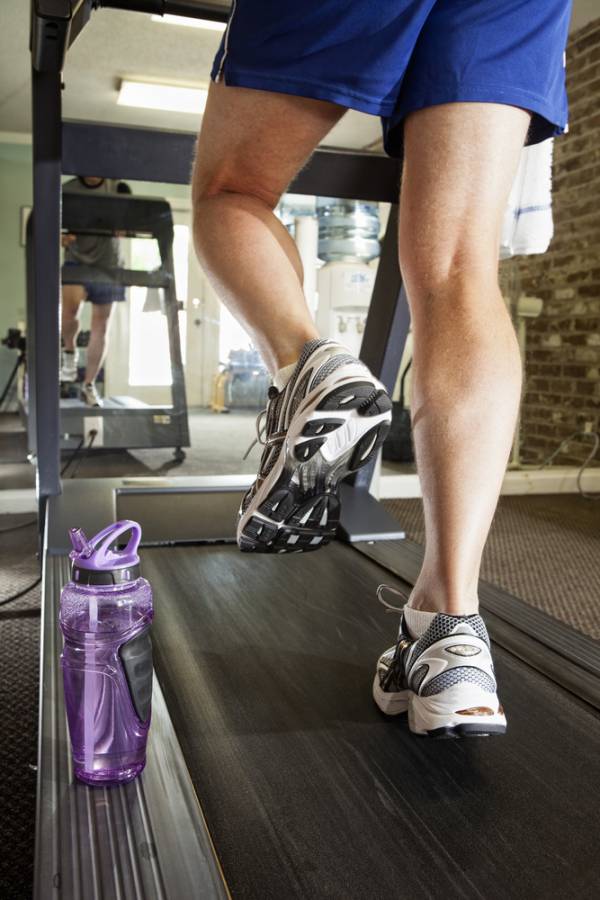Many people today are leaning more towards interval training to augment their conditioning programs – and for good reason. Interval training allows for many positive aspects when done safely and efficiently, and when performed with a high level of effort or intensity, it can yield great results. Interval training is generally short in duration (lengthy sessions are impossible, actually) and does not need to be done more than one to two times per week when combined with a sensible strength training program.
Interval training can be done in countless ways using an assortment of applications of varying modalities, protocols, and frequency. With interval training, there’s an elevated production of energy that can enhance the cardiovascular system, improve body composition, increase athletic and recreational performance, and increase anaerobic/muscular strength.
But as much as performing intervals is a solid means of training, it can have its pitfalls as well. Too often people abuse interval training – not realizing that such high levels of intensity, poor choices of modalities, or too many repetitions or frequency can lead to overtraining, which can in turn lead to injury, poor performance, a compromised immune system, and the endless list of negatives associated with too much of a good thing. Obviously, then, a person needs to approach interval training judiciously.
Take to The Hills
For the sake of being somewhat concise, today I will only discuss one running approach that I have found to be beneficial in a number of ways. This recommendation is nothing new under the sun, but a lot of individuals don’t place enough value on the benefits of the activity of incline or hill work.
One of the major advantages that I have found in performing incline/hill sprints is the reduction in compressive forces to the joints and soft tissue (muscles, tendons, ligaments) as opposed to performing intervals on flat surfaces. I have also found that there is less risk of becoming injured (even with a high output of energy) because stride rates (speeds) are reduced and more control can be used than when performing a specific exercise such as running, cycling, walking, and even the elliptical.
 To clarify my reasoning, let’s think about it this way. If a car is on a flat surface and is moving along at 55mph then hits an incline, the speed of the car slows down due to the incline, yet the RPMs are still revving quite high. If the car were to continue at 55mph it would have to work even harder to maintain that speed requirement on the incline. In our case, we are looking to keep the RPMs high but not the speed. Incline/hill sprints will give the lower extremities in particular (legs, hips, hamstrings, calves, shins) a very good strength workout, not to mention the abdominals and torso. And of course, there’s the obvious stimulation to the cardiovascular and respiratory systems.
To clarify my reasoning, let’s think about it this way. If a car is on a flat surface and is moving along at 55mph then hits an incline, the speed of the car slows down due to the incline, yet the RPMs are still revving quite high. If the car were to continue at 55mph it would have to work even harder to maintain that speed requirement on the incline. In our case, we are looking to keep the RPMs high but not the speed. Incline/hill sprints will give the lower extremities in particular (legs, hips, hamstrings, calves, shins) a very good strength workout, not to mention the abdominals and torso. And of course, there’s the obvious stimulation to the cardiovascular and respiratory systems.
Some Considerations
Because intervals can be performed in a variety of ways, I will suggest that if you are doing a higher volume of work, it’s best to not do an all-out effort right from the beginning. Consider the interval reps the same way you would if you were lifting weights. If you were using a resistance that can yield 10 reps, the last couple of reps would be the most challenging. This has an inherent warm-up built into the program, allows for a greater focus on mechanics due to the repetitive skill work and can enable an individual to benefit from those last few repetitions in many ways.
Conversely, if you are going all-out right from the start, make sure you have an ample warm-up and consider only doing 4-5 max effort intervals as the output of energy will be too excessive to proceed without possibly risking improper form and may lead to an injury or overtraining.
Below are two examples that can be used interchangeably:
Down and Dirty: A Progressive Workout Example
Here’s a little down and dirty, quick interval workout that can be done on a treadmill or a hill. Please keep in mind that this is just one of hundreds if not thousands of ways to utilize incline/hill work.
 First, do an easy warm-up such as a light half-mile to a mile jog to get the blood flowing. Once you are ready to start your incline/hill work, set the speed and incline so that you can perform a 30 second hard run with a 30 second recovery that allows you to complete 10 solid reps with the last few reps being a good, solid challenge (your running form should not be compromised).
First, do an easy warm-up such as a light half-mile to a mile jog to get the blood flowing. Once you are ready to start your incline/hill work, set the speed and incline so that you can perform a 30 second hard run with a 30 second recovery that allows you to complete 10 solid reps with the last few reps being a good, solid challenge (your running form should not be compromised).
For example, if you run a comfortable warm-up for a half-mile at a 10 minute mile pace (MMP) with a zero incline, bump the incline to 7 or 8 and push the speed so that you are running between 8:30 and 8:45 MMP. Once you complete the 10 reps, rest for 60 seconds. Now, using the same incline and speed, perform a 20 second sprint with a 10 second recovery for 3-5 reps. Depending on your warm-up time, this workout can be completed in less than 20 minutes.
High Output Interval Training (HOIT): An Outdoor Hill Workout Example
Should you choose to take this workout to the great outdoors and want to make it a max effort day, jog for a while to make sure you are well warmed up. Find a sizeable hill and either perform a timed all-out sprint up the hill or sprint the entire distance of the hill and walk briskly back to the start position.
Choosing time or distance will give you an endless array of variety in this case and can make for many more challenges. The walk down the hill is your recovery period and your time will vary due to fatigue, but make a conscious effort to make your way back down quickly, turn, establish your proper sprint position, then sprint the hill again. Turn and do another rep until all reps are completed. In this manner, you will get more rest due to the walk back but that will simply enable you to go at the hill harder so when it’s all said and done, the difference in the benefits will be nominal.
The Last Interval
Interval training should leave you taxed, but not completely exhausted. Working yourself to a point where you can’t finish the repetitions in good form or you are flat on your back is not, I repeat, not a productive approach to improving your health and fitness. Consider taking one or both of these workouts for a ride as a change of pace to your lower body and conditioning training and remember to use interval training as just another tool in your overall fitness program.
Photos courtesy of Shutterstock.






